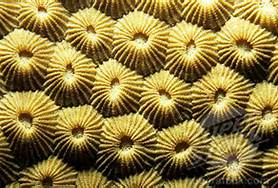 SPECIALLY TREATED SEA-CORAL SUCCEEDS AS BONE GRAFT (Orthopedics This Week)
SPECIALLY TREATED SEA-CORAL SUCCEEDS AS BONE GRAFT (Orthopedics This Week)
Sea coral is back and may be better than ever—as bone graft.
Of course, the problem for surgeons requiring bone graft material is well understood. Autograft (pieces of bone taken from other parts of the body and implanted where bones are injured) work but they cause pain in the places where the bone was removed. Artificial bone grafts made from calcium compounds are strong, have a porous structure that provides a scaffold for new bone cells to grow on but are slow to heal. Also, they do not completely dissolve in the body.
Zhidao Xia, Ph.D., of Swansea University, the United Kingdom, is conducting research on new materials for bone grafts. He notes, “When biomaterials do not biodegrade and remain in skeletal tissue, they may continuously cause problems in the host. In extreme conditions, it is possible that the different mechanical properties of the artificial bone graft may cause a re-fracture or become a source for bacterium growth in infection.”
This problem may have been overcome through the use of specially processed coralline hydroxyapatite (CHA), made from calcium carbonate found in sea coral shells . According to Ranjini Raghunath, writing for redOrbit.com, researchers have partially converted (CHA) and found that, with processing, it can degrade completely within 1-2 years. The incompletely-converted form is called CHACC. It retains CHA’s original porous structure as well as its compatibility with the human body. The researchers made CHACC from sea coral harvested in South China. The material has shown promising results in lab mice as well as in initial clinical trials. Xia published the results inBiomedical Materials.
In initial tests, Xia mixed CHACC with mesenchymal stem cells and implanted them in lab mice. In 10 weeks, new bone cells had formed on the CHACC’s surface.
Next, the researchers surgically implanted CHACC in 16 patients suffering from various bone defects and tested the growth of bone cells and CHACC’s durability. In 4 months, the bones started healing and within 2 years, most of the CHACC had dissolved.
“Our methods have considerably improved the outcome of bone grafts by using the partial conversion technique, in which the biodegradable composition from natural coral is reserved,” Xia stated.
The researchers explained in their paper that while CHACC bone grafts provide a strong-yet-soluble scaffold for new bones to grow, they still do not have the autografts’ innate ability to trigger bone growth on their own. Once this disadvantage is overcome, CHACC could provide a permanent bone graft alternative for the several million people worldwide who need transplants each year, they said.
“Our future work is to combine controlled growth factor delivery and stem cell technology in order to develop an even better solution for bone graft materials.” Xia told Raghunah.
